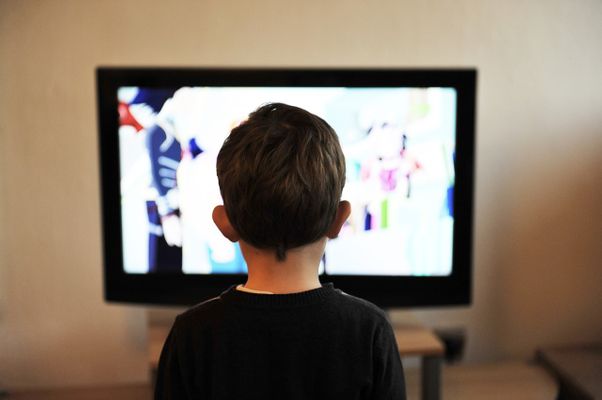9.1.1
New Media
New Media: Neophiliacs
New Media: Neophiliacs
New media refers to the evolution of existing media delivery systems and the development of new digital communication technologies.


New media
New media
- Three characteristics of the new media:
- Convergence- combining different technologies.
- Compression- signals are digital so can be sent down the same cable.
- Interactivity- where the audience can interact with the media.


Neophiliacs
Neophiliacs
- Neophiliacs support the growth of the new media.
- They believe it has had a positive impact on society.
- They outline three positive aspects of the new media.


E-commerce
E-commerce
- An e-commerce revolution:
- Shopping online is quick and easy.
- Retailers offer exclusive internet deals to consumers, making prices more competitive.


Democracy
Democracy
- Revitalising democracy:
- People can seek alternative views than the ones presented in mainstream media.


Choice
Choice
- Increased consumer choice:
- More TV channels and an increase in media output systems.
New Media: Cultural Pessimists
New Media: Cultural Pessimists
New media refers to the evolution of existing media delivery systems and the development of new digital communication technologies.


New media
New media
- Three characteristics of the new media:
- Convergence- combining different technologies.
- Compression- signals are digital so can be sent down the same cable.
- Interactivity- where the audience can interact with the media.


Cultural pessimists
Cultural pessimists
- Cultural pessimists believe that the revolution of the new media has been exaggerated.
- They believe it has had a negative impact on society.
- They outline three negative aspects of the new media.


Monopolies
Monopolies
- Domination by media conglomerates:
- The internet is dominated by a small amount of companies and they can direct audiences to certain products that benefit the elite.


Quality
Quality
- Decline in quality:
- There isn’t more choice.
- Instead media companies fill TV channels with repeated programming and reality TV to dumb down audiences.


Elite power
Elite power
- Reinforcing elite power:
- Major corporations dominate the internet with websites that ensure their view is most prominent.
1Theory & Methods
1.1Sociological Theories
1.2Sociological Methods
2Education with Methods in Context
2.1Role & Function of the Education System
2.2Educational Achievement
2.3Relationships & Processes Within Schools
3Option 1: Culture & Identity
3.1Conceptions of Culture
3.2Identity & Socialisation
3.3Social Identity
3.4Production, Consumption & Globalisation
4Option 1: Families & Households
4.1Families & Households
4.2Changing Patterns
4.3The Symmetrical Family
4.4Children & Childhood
5Option 1: Health
5.1Social Constructions
5.2Social Distribution of Healthcare
5.3Provision & Access to Healthcare
5.4Mental Health
6Option 1: Work, Poverty & Welfare
6.1Poverty & Wealth
7Option 2: Beliefs in Society
7.1Ideology, Science & Religion
7.2Religious Movements
7.3Society & Religion
8Option 2: Global Development
8.1Development, Underdevelopment & Global Inequality
8.2Globalisation & Global Organisations
8.3Aid, Trade, Industrialisation, Urbanisation
9Option 2: The Media
9.1Contemporary Media
9.2Media Representations
10Crime & Deviance
10.1Crime & Society
10.2Social Distribution of Crime
Jump to other topics
1Theory & Methods
1.1Sociological Theories
1.2Sociological Methods
2Education with Methods in Context
2.1Role & Function of the Education System
2.2Educational Achievement
2.3Relationships & Processes Within Schools
3Option 1: Culture & Identity
3.1Conceptions of Culture
3.2Identity & Socialisation
3.3Social Identity
3.4Production, Consumption & Globalisation
4Option 1: Families & Households
4.1Families & Households
4.2Changing Patterns
4.3The Symmetrical Family
4.4Children & Childhood
5Option 1: Health
5.1Social Constructions
5.2Social Distribution of Healthcare
5.3Provision & Access to Healthcare
5.4Mental Health
6Option 1: Work, Poverty & Welfare
6.1Poverty & Wealth
7Option 2: Beliefs in Society
7.1Ideology, Science & Religion
7.2Religious Movements
7.3Society & Religion
8Option 2: Global Development
8.1Development, Underdevelopment & Global Inequality
8.2Globalisation & Global Organisations
8.3Aid, Trade, Industrialisation, Urbanisation
9Option 2: The Media
9.1Contemporary Media
9.2Media Representations
10Crime & Deviance
10.1Crime & Society
10.2Social Distribution of Crime
Unlock your full potential with Seneca Premium
Unlimited access to 10,000+ open-ended exam questions
Mini-mock exams based on your study history
Unlock 800+ premium courses & e-books